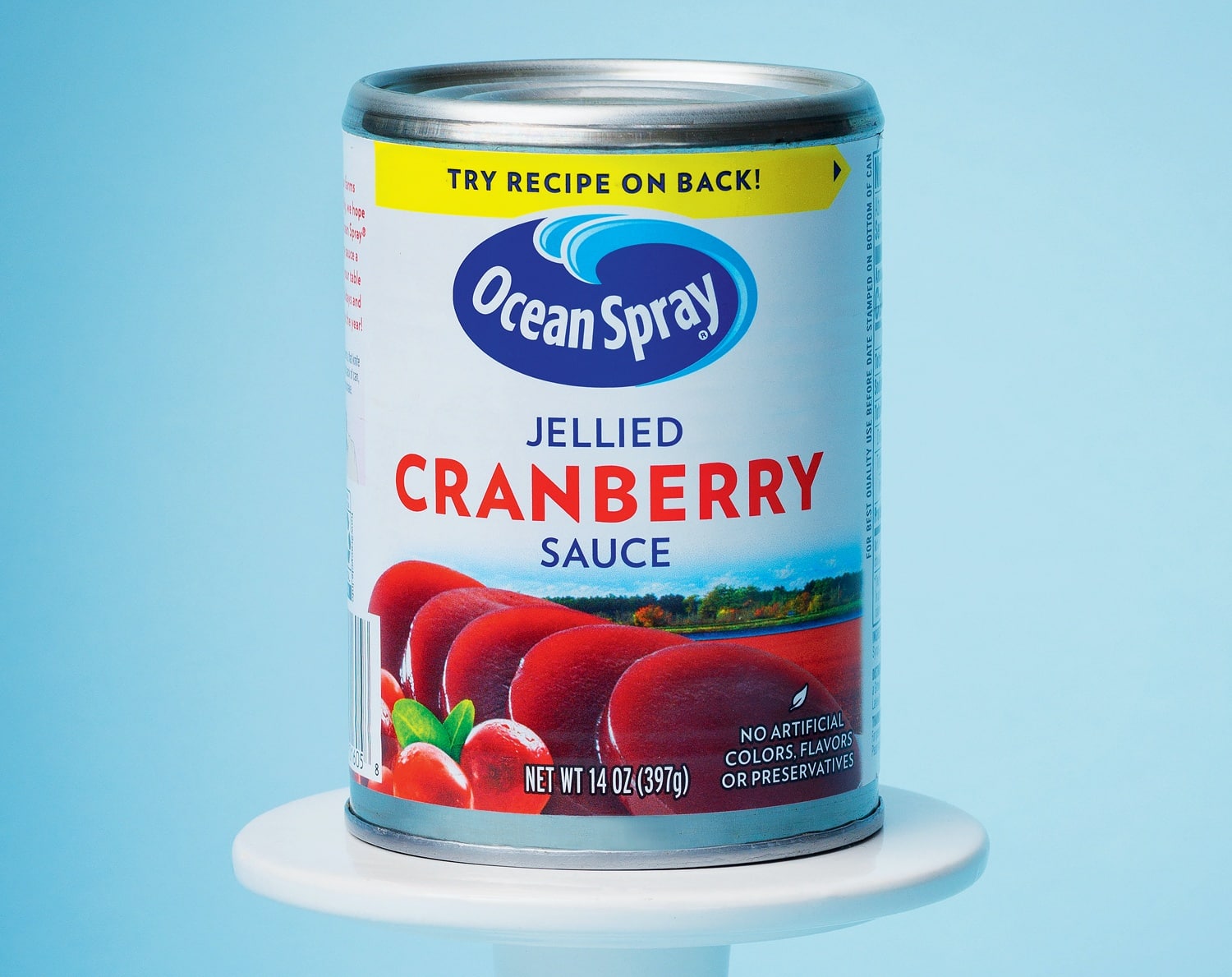Plop Star | An Ode to Canned Cranberry Sauce
What would Thanksgiving be without wiggly, jiggly canned cranberry sauce?

Coffee By Design | Portland, Maine
Photo Credit : Katherine KeenanDevotees of homemade cranberry sauce, please don’t take offense. We all appreciate the deliciousness of your choice. But for those of us who prefer ours can-shaped and jiggly (a full 73 percent of respondents in one Ocean Spray poll), a moment of thanks is due to Marcus Urann.
Cranberries were a staple of Native American life in New England—providing dyes and medicines as well as food—long before Europeans arrived. The most basic cranberry sauce is made by boiling berries in sugar water until they pop, releasing their natural pectin. And although cranberry sauce probably wasn’t served at the first Thanksgiving, the berries may have been an ingredient in some “puddings in the belly,” as stuffings were then called. The popularity of cranberry sauce as a turkey side dish dates back at least to 1796, when Amelia Simmons included it in the first U.S. cookbook, American Cookery.
Harvested from mid-September until mid-November, cranberries were first marketed and sold in the 1700s, but always as a seasonal fruit. Then in 1906, Urann, a lawyer, bought a cranberry bog and set up cooking facilities in Hanson, Massachusetts. Looking to extend the short selling season, he started canning cranberries in 1912. In 1930, he joined two other growers to form a cooperative that would later become Ocean Spray. By 1941, their cranberry sauce was distributed nationally. Today, Ocean Spray represents about 700 growers, and produces 70 percent of the world’s canned cranberry sauce.
Placed end to end, the number of cans of Ocean Spray cranberry sauce that are consumed each year would stretch from Boston to Salt Lake City. During the holiday season alone, Americans gobble up 5 million gallons’ worth—enough to fill seven and a half Olympic-size swimming pools.
And if you’ve ever wondered why those ubiquitous cans seem to be labeled upside down: In the early 2000s, someone at Ocean Spray realized that by putting the more rounded edge of the can on the top rather than the bottom, they could create an air bubble that would facilitate the sauce sliding out in that satisfying plop—a sound of the season that homemade can’t ever duplicate.








I really LOVE this jellied-cranberry sauce from the can. However, my Aunt Edythe’s famous cranberry sauce recipe, made with fresh cranberries, raspberry Jell-o, and crushed pineapple (drained), is still my all-time favorite. Happy Autumn!